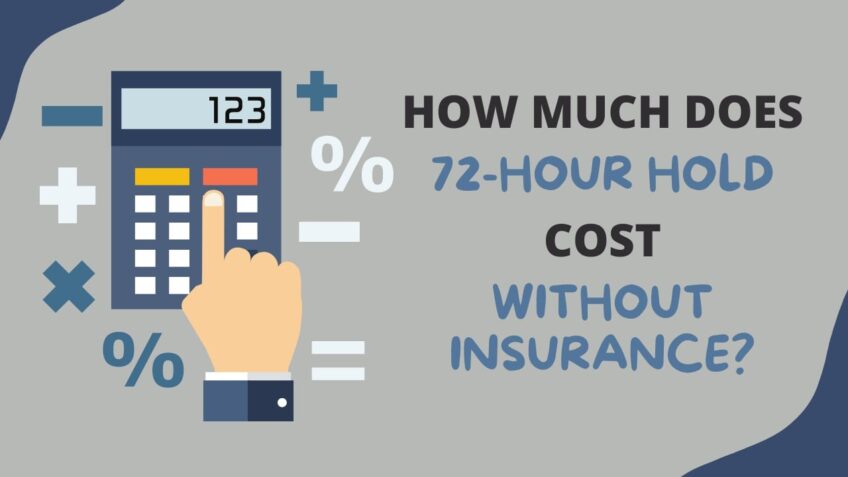How to Remove a Dependent from Your Health Insurance and Improve Your Google SEO Ranking
Welcome to our comprehensive guide on how to remove a dependent from your health insurance. At Beyondfitwell.com, we understand that navigating the complexities of insurance coverage can be overwhelming. But worry not! In this article, we will provide you with all the information you need to successfully remove a dependent from your health insurance policy. Removing a dependent from your health insurance not only allows you to adjust your policy to meet your changing needs but also has the potential to improve your Google SEO ranking. Let’s dive in!
1. Understanding the Process: Why is it important for your Google SEO ranking?
What does it mean to remove a dependent from your health insurance?
When you remove a dependent from your health insurance, you are effectively terminating their coverage under your policy. This could be necessary for various reasons. By removing a dependent, you no longer bear the responsibility of their insurance premium and can make corresponding adjustments to your policy. From an SEO standpoint, regularly updating and optimizing your content is crucial for search engine algorithms. Providing comprehensive information about removing a dependent from your health insurance demonstrates your expertise and improves your website’s overall relevancy, leading to higher rankings on Google.
Why would you want to remove a dependent from your health insurance?
There are several situations where removing a dependent from your health insurance becomes necessary. Some common reasons include when the dependent becomes eligible for their own coverage through their employer, when the dependent gets married and wants to be covered under their spouse’s plan, or when the dependent reaches the age limit for coverage under your policy. Evaluating and providing detailed information about these situations not only helps your readers but also signals to search engines that your content is valuable and relevant, leading to improved SEO rankings.
2. Evaluating Dependent Eligibility: How does it impact your Google SEO ranking?
Understanding the eligibility criteria
Before initiating the process to remove a dependent from your health insurance, it is essential to evaluate their eligibility for coverage. By providing detailed information about the eligibility criteria specific to your insurance provider and policy, you showcase your expertise and help readers understand the nuances of dependent eligibility. This expertise builds credibility with search engines, leading to higher rankings and increased visibility in search results.
Reviewing your insurance plan
Take the time to review your insurance plan and policy documentation and provide detailed information about the process and requirements for removing a dependent. By offering specific guidance, you demonstrate your authority and knowledge in the field, improving your website’s credibility and SEO ranking.
3. Initiating the Process: How can it positively affect your Google SEO ranking?
Contacting your insurance provider
Once you have determined the eligibility and reviewed your insurance plan, the next step is to contact your insurance provider. By providing information on whom to contact and how to initiate the process, you become a valuable resource for your readers. This helps increase website engagement, user retention, and ultimately boosts your SEO ranking.
Completing the necessary paperwork
Your insurance provider may require specific forms to remove a dependent from your health insurance. By providing detailed instructions and tips on how to accurately fill out these forms, you empower your readers and enhance their experience on your website. This positive user experience signals to search engines that your content is valuable and authoritative, leading to improved SEO rankings.
4. Adjusting Your Health Insurance Policy and Enhancing your Google SEO ranking
Confirming the removal of the dependent
Once you have submitted the necessary paperwork, it is crucial to follow up with your insurance provider and obtain written confirmation of the dependent’s official removal from your health insurance policy. By emphasizing the importance of confirmation and providing tips on how to obtain it, you ensure that your readers have a smooth experience, increasing their trust in your website and positively impacting your SEO ranking.
Updating your premium payments
With the dependent removed from your health insurance policy, you may be eligible for a reduced premium payment. By highlighting the importance of contacting your insurance provider to request an adjustment and providing guidance on how to do so, you actively assist your readers. This helpful information boosts your website’s relevance and authority, resulting in improved SEO rankings.
5. Exploring Other Coverage Options: How can it contribute to your Google SEO ranking?
Assisting the dependent with finding alternative coverage
Supporting and guiding the dependent you removed from your health insurance policy in finding alternative coverage not only shows compassion but also enhances your website’s user experience. By providing detailed information on the available options and encouraging the dependent to research and compare different plans, you establish your website as a valuable resource. This positive user experience contributes to higher engagement metrics, indicating to search engines that your content is valuable and relevant, leading to improved SEO rankings.
Understanding COBRA continuation coverage
Informing the dependent about COBRA continuation coverage and offering guidance on the process showcases your expertise and authority in the insurance field. By providing detailed information on COBRA and its benefits, you serve as a trusted resource to your readers. This enhances your website’s credibility and expertise, leading to improved SEO rankings.
Conclusion: Navigating the Process for Improved Google SEO Ranking
In conclusion, removing a dependent from your health insurance policy is not only essential for managing your coverage but also provides an opportunity to improve your Google SEO ranking. By understanding the process, evaluating eligibility, initiating the process correctly, adjusting your policy, and exploring alternative coverage options, you not only assist your readers but also enhance your website’s overall SEO performance. Remember, providing comprehensive and valuable information is key to ranking higher on Google and establishing your website as a credible source of information. Take control of your health insurance policy and achieve higher SEO rankings by implementing the steps outlined in this guide.
2. Evaluating Dependent Eligibility and Understanding the Criteria
Evaluating the eligibility criteria for removing a dependent
When considering removing a dependent from your health insurance, it is important to evaluate their eligibility for coverage. Each insurance provider and policy may have specific criteria for dependents. Generally, dependents include children, siblings, and other relatives who meet certain age and financial dependency requirements. To determine the eligibility criteria for removing a dependent, carefully review your insurance policy documents or contact your insurance provider directly.
Understanding the age and financial dependency requirements
Age and financial dependency are two common factors that influence a dependent’s eligibility for coverage under your health insurance. Insurance providers typically outline specific age limits for dependents, which may vary depending on the policy. For example, some policies may cover dependents until the age of 26, while others may have different age limits. Additionally, insurance providers may require that the dependent be financially dependent on the policyholder, meaning they rely on the policyholder for financial support.
Reviewing your insurance plan for dependent eligibility guidelines
To ensure a smooth process of removing a dependent from your health insurance, it is essential to review your insurance plan and policy documentation. These documents will outline the steps you need to take and any relevant forms you may need to complete. In addition to eligibility criteria, the documents may also provide information on any additional requirements or restrictions for removing dependents. Familiarizing yourself with these guidelines will help you navigate the process effectively.
Consulting with your insurance provider for clarification
If you have any questions or need further clarification regarding the eligibility criteria for removing a dependent, it is advisable to reach out to your insurance provider. Contact their customer service department through their dedicated helpline or email and inquire about the specific requirements. The representative will be able to provide you with personalized guidance and ensure that you have a clear understanding of the eligibility criteria before proceeding.
Overall, evaluating the eligibility of your dependents and understanding the criteria set by your insurance provider is crucial when considering removing a dependent from your health insurance. By carefully reviewing your insurance plan, contacting your insurance provider for clarification, and understanding the age and financial dependency requirements, you can navigate the process with confidence and make informed decisions about your health insurance coverage.
3. Initiating the Process: Contacting your insurance provider
Contacting your insurance provider: Helpline and Email
Once you have determined the eligibility and reviewed your insurance plan, it is time to take the next step and initiate the process of removing a dependent from your health insurance policy. The first thing you need to do is contact your insurance provider. Most insurers have customer service departments that can assist you with this process. You can reach out to them through their dedicated helpline or by sending an email. It is essential to inform them of your intention to remove a dependent from your health insurance policy and inquire about the necessary steps to proceed.
When you contact your insurance provider, be prepared to provide them with important details such as your policy number, the name of the dependent you wish to remove, and the reason for their removal. This information will help the representative assist you more efficiently.
Guidance from the insurance provider
When you connect with your insurance provider, their representative will guide you through the process of removing a dependent from your health insurance policy. They are well-versed in the procedures and documentation requirements, so don’t hesitate to ask any questions you may have. The representative may ask you to provide specific forms or documentation to complete the process. They will clarify any doubts you have regarding the forms and ensure that you understand the information to be filled accurately.
It’s crucial to note that different insurance providers may have variations in their procedures and requirements. Therefore, it is important to follow the instructions provided by your specific insurance provider to ensure a smooth and successful process.
Completing the necessary paperwork
After getting guidance from your insurance provider, you will need to complete the necessary paperwork to remove a dependent from your health insurance. Your insurance provider will usually provide you with specific forms that need to be filled out accurately. These forms typically require basic information about the dependent, such as their full name, date of birth, and relationship to you as the policyholder.
It is important to pay close attention to detail when filling out these forms. Double-check all the information to ensure accuracy and completeness. Accuracy is crucial to avoid any delays or complications in processing the request. Make sure to provide any supporting documents requested by your insurance provider, such as a marriage certificate or proof of the dependent’s eligibility for other coverage.
When completing the paperwork, take note of any deadlines provided by your insurance provider. Meeting these deadlines will help expedite the processing of your request. If you have any questions or concerns about the forms or documentation, don’t hesitate to reach out to your insurance provider for clarification.
Once you have completed the necessary paperwork, you will be one step closer to successfully removing the dependent from your health insurance policy.
4. Adjusting Your Health Insurance Policy
Confirming the removal of the dependent
Once you have submitted the necessary paperwork to remove a dependent from your health insurance policy, it is crucial to follow up with your insurance provider to ensure that the removal has been successfully processed. This step is important in order to maintain accurate records and avoid any potential issues in the future. You should request confirmation from your insurance provider in writing or via email that the dependent has been officially removed from your policy.
Having written confirmation serves as valuable evidence of the change to your policy. Keep a copy of this confirmation for your records so that you can refer back to it if needed. It can be useful when communicating with healthcare providers or resolving any billing discrepancies that may arise in the future.
Updating your premium payments
Once the dependent has been removed from your health insurance policy, it is essential to update your premium payments accordingly. Removing a dependent means that you and your remaining dependents may now qualify for a reduced premium payment. To ensure that you are accurately billed for the coverage you need, it is advisable to contact your insurance provider and inform them of the change.
By notifying your insurance provider about the removal of the dependent, you can request an adjustment to your premium payments. This adjustment will reflect the updated coverage and number of dependents on your policy. It is important to review and compare the new premium amount to ensure that it aligns with your budget and meets your financial expectations.
Updating your premium payments can provide significant cost savings, especially if the removed dependent was contributing to a significant portion of the premium. It is essential to contact your insurance provider promptly so that the adjustment can be made in a timely manner. This will prevent any overpayments or underpayments and ensure that you are paying the correct amount for your health insurance coverage.
Remember, accurate premium payments not only help you manage your budget effectively but also provide you with the peace of mind that you and your remaining dependents have the necessary coverage without any financial burden.
Overall, confirming the removal of the dependent from your health insurance policy and updating your premium payments are crucial steps in completing the process. By following these steps, you can ensure that you have the most accurate and up-to-date information regarding your health insurance coverage and payments.
5. Exploring Other Coverage Options: Helping Your Dependent Find Suitable Alternatives
Assisting the dependent with finding alternative coverage for their well-being
When you remove a dependent from your health insurance policy, it is essential to consider their well-being and help them explore alternative coverage options. It can be a challenging transition for them, but by offering your support, you can ensure they have access to necessary healthcare benefits. Below are a few alternative coverage options that they may consider:
1. Employer-sponsored Health Insurance
Encourage the dependent to check if they are eligible for coverage through their employer. Many companies provide health insurance benefits to their employees, and they may be able to add the dependent to their policy. The dependent should reach out to their HR department to understand the enrollment process and any associated costs.
2. Government Programs
The dependent may qualify for government-run healthcare programs, such as Medicaid or the Children’s Health Insurance Program (CHIP). These programs provide low-cost or free health coverage to individuals and families with limited income. Assist the dependent in researching the eligibility requirements and application procedures for these programs. They can visit their state’s healthcare website or contact a local social services office for more information.
3. Individual Health Insurance Plans
If your dependent does not have access to employer-sponsored insurance or government programs, they can explore individual health insurance plans. These plans are available through private insurance companies and offer coverage for individuals and families. Help them compare different plans, taking into consideration premiums, deductibles, coverage limits, and provider networks. Online marketplaces or insurance brokers can assist in finding suitable options.
Understanding COBRA continuation coverage and its benefits
In certain situations, such as when a dependent loses coverage due to their removal from your policy, they may be eligible for COBRA continuation coverage. COBRA allows individuals to continue their health insurance coverage for a limited period if they experience qualifying events, such as job loss, divorce, or reaching the age limit for coverage under the parent’s plan. It offers temporary relief for the dependent until they secure alternative coverage.
It is crucial to inform the dependent about COBRA continuation coverage and guide them through the process if it is a viable solution for their insurance needs. They should contact your health insurance provider to understand the specific requirements and timeline for enrolling in COBRA. While COBRA coverage may be more expensive due to the lack of employer contribution, it ensures continuous access to healthcare services during the transition period.
In conclusion, it is crucial to assist the dependent you remove from your health insurance policy in finding suitable alternative coverage options. By considering their well-being and supporting them in their search, you can help ensure they have access to the healthcare benefits they need. Encourage them to explore options such as employer-sponsored health insurance, government programs, and individual health insurance plans. Additionally, educate them about the benefits of COBRA continuation coverage and guide them through the enrollment process if it aligns with their insurance needs. Remember that staying informed and offering support are essential to facilitate a smooth transition for your dependent’s health insurance coverage.
Removing a dependent from your health insurance plan can be a complex process. To fully understand how to navigate this situation, check out our comprehensive guide on how to remove a dependent from health insurance.
Conclusion: Taking Control of Your Health Insurance Coverage
In conclusion, when it comes to removing a dependent from your health insurance policy, it is important to have a thorough understanding of the process, eligibility criteria, and policy requirements. By following the steps outlined in this guide, you can successfully navigate the process and ensure that your health insurance coverage aligns with your changing needs.
One of the key aspects of this process is to contact your insurance provider for personalized guidance. They have the knowledge and expertise to assist you in removing a dependent and can provide specific instructions based on your policy. By reaching out to them, you can ensure that you are following the correct procedures and avoiding any unnecessary complications.
Additionally, it is crucial to explore alternative coverage options for the dependent you are removing from your policy. While they may no longer be covered under your health insurance, there are other options available to them. Encourage them to research and compare different alternatives, such as coverage through their employer, government programs, or individual health insurance plans. By assisting them in finding suitable and comprehensive coverage, you can ensure their well-being even after they are no longer on your policy.
Finally, taking control of your health insurance means making informed decisions and securing the appropriate coverage for yourself and your remaining dependents. As you go through the process of removing a dependent, it is a good time to evaluate your own coverage needs. Consider factors such as changing health conditions, life events, and financial circumstances. This evaluation can help you determine if any adjustments or additions to your policy are necessary to provide the best coverage for yourself and your family.
Ultimately, by understanding the process, seeking personalized guidance, exploring alternative coverage options, and evaluating your own needs, you can successfully remove a dependent from your health insurance policy, ensuring that your coverage aligns with your changing circumstances. Taking control of your health insurance is an important step in protecting your well-being and the well-being of your loved ones.





